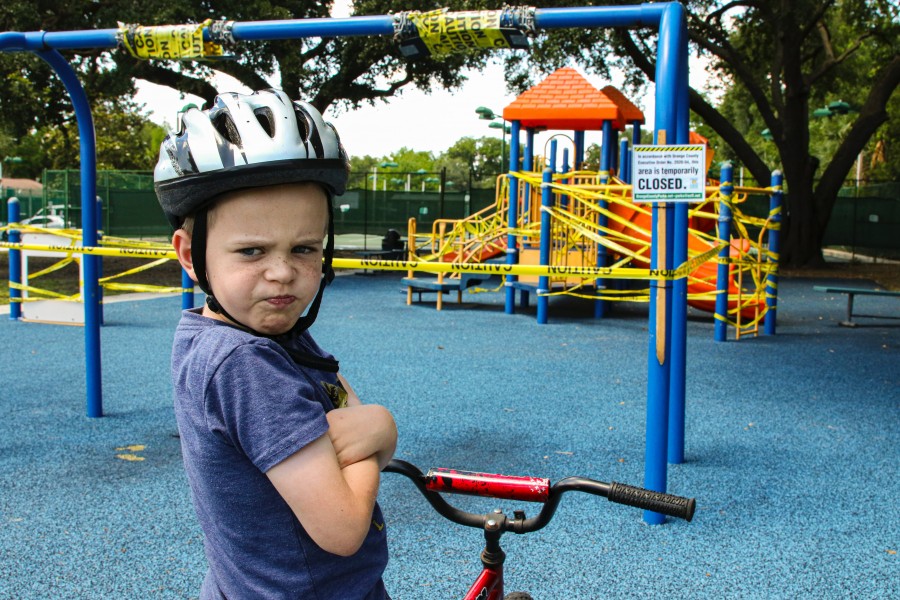Must know strategy to deal with Tantrums
Published 08 September 2021 at 22:34
Tickikids Blog Hong Kong > digest > Must know strategy to deal with Tantrums

Tantrum: an uncontrolled outburst of anger or frustration in a young child or like in a young child.
Children of any age can throw a tantrum. A tantrum leaves most parents agitated and lost on how to reconnect with their child. The situation can become even worse if it takes place in a social setting, causing embarrassment to join the mix of emotions for both the parent and the child.
Tantrums stem from built-up emotions coming out over a seemingly small issue. You may find your child with a closet overflowing with clothes in tears because they “have nothing to wear.” You may find your toddler crying that they’ve lost their Lego figurine, complaining about how they lose everything they love, and you as a parent never help to find it.
Every parent, has, at some point experienced their children making baseless complaints in a fit of anger. Hard-pressed for time and energy, when we experience meaningless tantrum throwing, it’s tempting to slip into a “fight-back” response and give them a long list of reasons on why they’re wrong. In some cases, we also end up blaming and shaming them for past behaviours and actions, thus, worsening the situation.
We have all entered fight mode only to find that it was counterproductive. The situation devolves into a shouting match or both of you end up sulking in a corner.

Photo Credit: Mick Haupt| Unsplash
For moments like these, tried and tested strategies to defuse a situation can give you the opportunity to connect more with your child and understand why they feel the way they do. Many of my clients have found these strategies to be highly effective.
Let us start with understanding the basic science behind tantrums.
In the simplest explanation, there are three parts of the brain at play in such situations:
- the left side of the brain
- the right side of the brain
- the reptile brain.
The left brain is logical, literal, linguistic, and linear. It helps us think logically and organises thoughts into sentences.
The right brain dictates one’s emotions. It looks at the big picture, specialising in images, emotion, and memory.
The reptile brain acts instinctually and makes split-second survival decisions, best known as the fight or flight response.
There are other parts of the brain that come into the picture, but to understand tantrums and how to deal with them, we will focus on these three parts. As a parent we need to remember: all challenging parenting situations such as tantrums, meltdowns, and aggressive behaviour are a result of loss of cooperation between the right and the left brain.
In the way that our body is healthy and functional when different organs and systems of the body are performing their individual roles well and cooperating with each other, we work best when all parts of the brain do their individual roles well and cooperate with each other.
When our children throw tantrums, they are predominantly working from the right side of the brain. They are overwhelmed with emotions, confused and chaotic. They can’t respond calmly and logically to the situation at hand.
As parents who want to bring up balanced individuals, it is imperative that we help our children to become better integrated, so the different parts of their brain cooperate and they learn to understand why they are having these tantrums, as well as how to deal with the build of emotions on their own.

Photo Credit: Ryan Franko | Unsplash
Here is a 3 step strategy you can follow:
- Don’t command and demand: Such situations, along with our own adult pressures, activates the reptile brain and we enter fight or flight mode. We want to give them a piece of their mind, use our authority and get them to do what is in best interest for them. However, when we are dealing with an emotional child, this will be counterproductive. So, the first step is to calm ourselves down and remind ourselves, in this situation commanding and demanding them will not help till we have fulfilled the emotional needs of their right-side brain.
- Connect with the right: It is crucial to bear in mind, no matter how illogical and nonsensical our child’s feeling might seem to us, it is very important to them. Before we make them see any logic, it is imperative to connect with their emotions. Acknowledge their feelings while using nonverbal signals like nurturing tone, gentle physical touch, empathetic facial expressions. We are connecting our right brain with their right brain. This emotional connection helps them calm down and come to a more balanced state of mind.
- Redirect to the left: Once the connection has been established, ask them to retell what happened (in instances like the lost Lego) or what kind of look they wanted to have (in instances like the child distressed over what to wear). Retelling gradually helps to move them from the emotional side of the brain to the logical brain and makes them think to make their story coherent, taking focus off their emotions. Gradually they move to calmer waters. At this point, when they have told their part of the story, you put in your logic and reasoning, it would make sense to them. Once the emotions of both the parent and child are in sync and they are both calm, it is easier to bring logic to the conversation and move towards planning, organising, and doing things.
As parents, we want our children to learn that difficult times and emotions will come and go. We want them to learn to face them and learn from them. We want them to learn tools and strategies to deal with them. Such situations are excellent opportunities for us to teach them the same. For us to make the most of these teachable moments, we ourselves need to be aware that our own reptilian brain that may be our automatic response in these situations and would be ready to give a huge lecture to the child. When a child is in right brain mode, they are unreceptive to any logic or reasoning. Use these great opportunities to help them use different parts of the brain so they can thrive as a balanced person, and we can enjoy parenting without wondering, “am I doing enough?”

Photo Credit: Xavier Mouton | Unsplash
About the author:
Shalini Bindal is a Transformational Coach certified by the International Coaching Federation. She has been working with teenagers and parents to create new mindsets and ways of thinking to make tumultuous adolescent years become years of self exploration, self discovery and self mastery so that each child can reach their highest potential without holding themselves back.
Her parenting programs “Am I doing Enough” and “No blame-no shame parenting” are programs to support time-pressured parents design science-based customised strategies to make their parenting, a joyful journey.